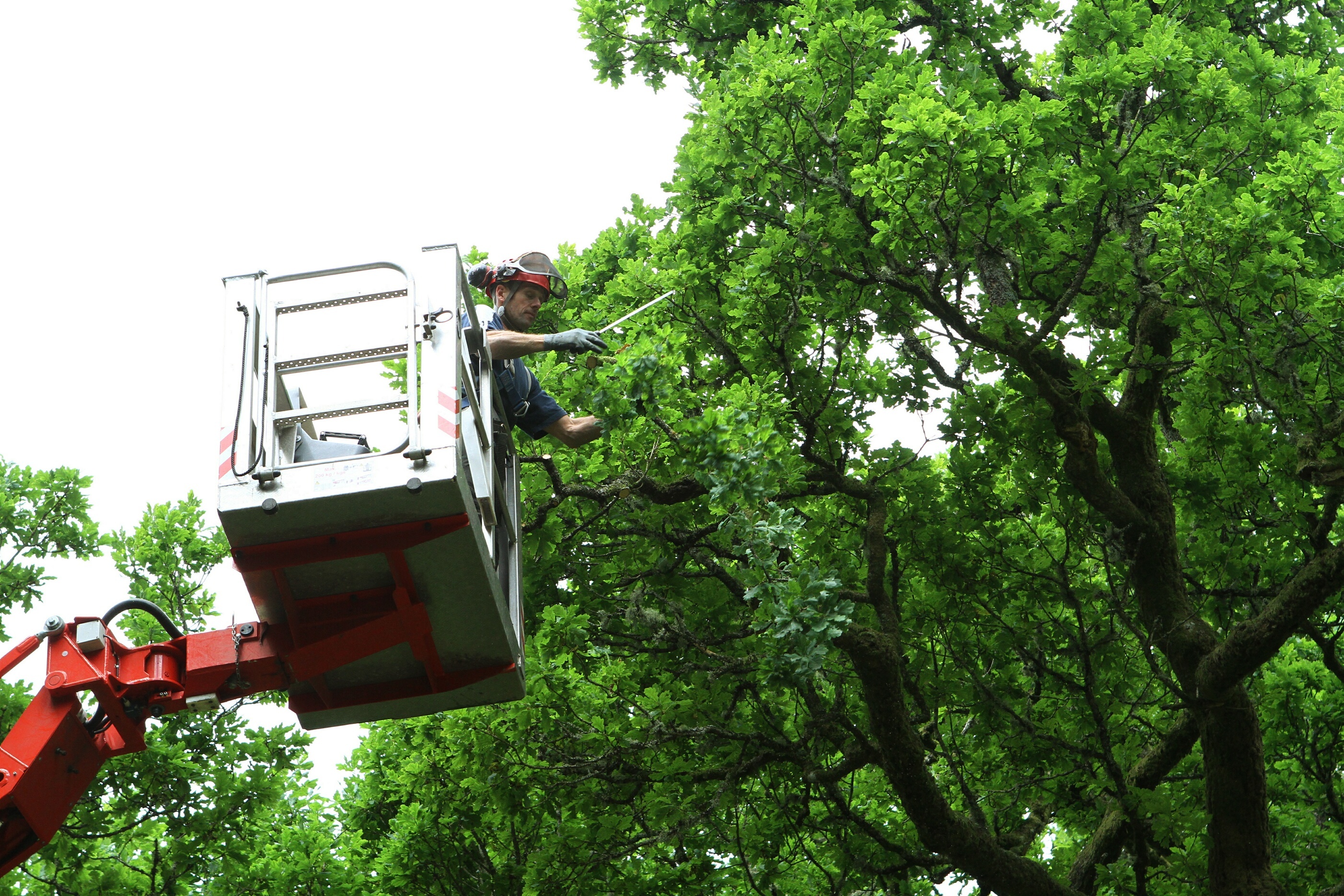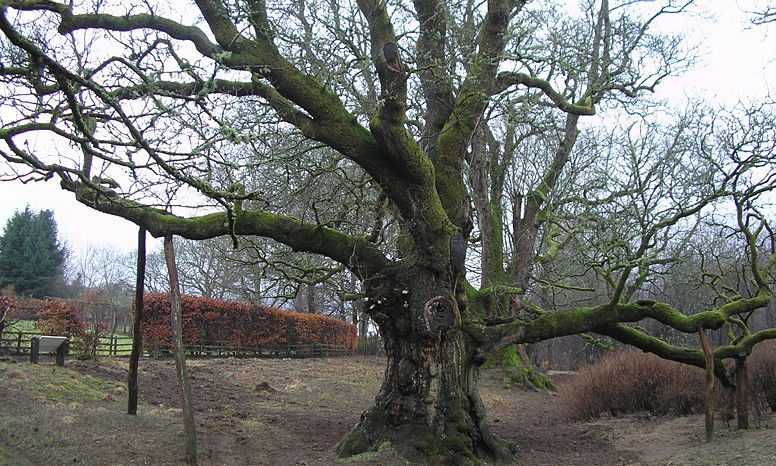Work is under way to safeguard one of Scotland’s most famous trees.
The centuries-old Birnam Oak is a survivor from the ancient Perthshire forest which was immortalised by William Shakespeare.
But conservationists have warned that the gnarled landmark could split in two unless urgent treatment is carried out.
Leading tree surgeon Paul Hanson got to work on an intensive project to save the oak for future generations.
The work, which was commissioned by the Perth and Kinross Countryside Trust, involves trimming back some of the tree’s lengthy branches.
The project was able to start after a survey was completed on Monday which confirmed there were no bats roosting inside.
Mr Hanson said: “Biologically, the tree is in great shape and it looks absolutely terrific from a distance.
“Unfortunately, the structural timber has been eaten away. There’s a number of interesting fungi which is doing its best to eat it.”
He added: “The bigger it grows, there is a danger that its going to overload itself and collapse.
“It’s not just the fact that it’s hollow, the problem is the extent of decay combined with how much of the timber is missing.”
Mr Hanson said there was a hollow of about 13ft inside the oak: “But it has decayed further than that. It’s almost like it is a giant mushroom, just waiting to fall over.”
He said that wooden supports, which have helped prop up the massive branches for decades, were also in a bad way and may have to be replaced soon.
“Our philosophy is to do as little as we have to do, but as much as we need to,” he said.
“We will be making the canopy a bit smaller by just a few metres. Most people walking past probably won’t notice the difference.”
Mr Hanson said: “The work will also help reduce the wind resistance enormously.
“This is not a problem that’s entirely fixable, but we can help it stand up and it may even stay in place for another 400 or 500 years.”
The trust assessed the trees after the area was flooded during December when Storm Desmond took its toll on the region. Although the water is not thought to have caused much damage to the trees, it did affect the soil.
In Shakespeare’s Macbeth, the huge branches of trees in Birnam wood are used as camouflage by soldiers as they advance on the Scottish king.
It is believed that the bard was inspired during a visit to Perthshire and the north-east of Scotland in 1599.












